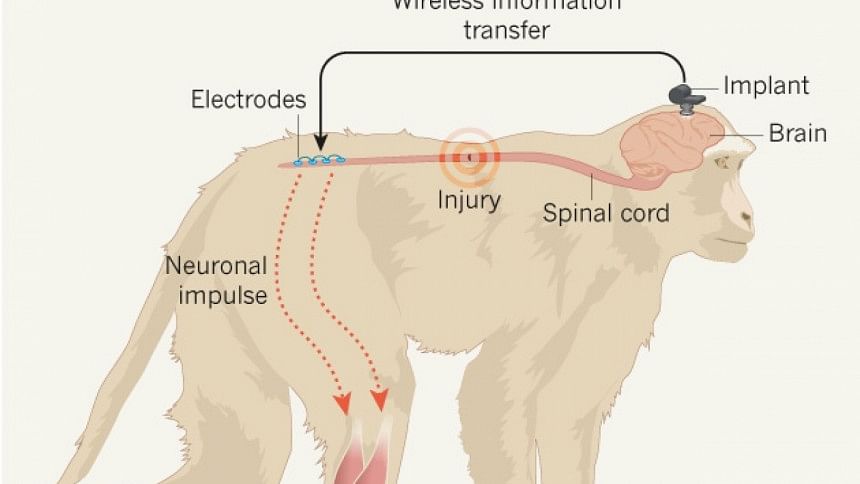Wireless implant allows paralysed monkeys to walk again
In a first, scientists have successfully restored walking movement in paralysed legs of primates, by implanting a wireless brain sensor to stimulate nerves in the spine responsible for locomotion.
The advance could help develop a similar system designed for humans who have had spinal cord injuries, according to a paper released in the journal Nature.
The wireless "brain-spinal interface" helped bypass spinal cord injuries and restored intentional walking movement to a temporarily paralysed leg in a pair of rhesus macaques.
"The system we have developed uses signals recorded from the motor cortex of the brain to trigger coordinated electrical stimulation of nerves in the spine that are responsible for locomotion," said David Borton, assistant professor at Brown University in the US.
"With the system turned on, the animals in our study had nearly normal locomotion," said Borton.
"There is evidence to suggest that a brain-controlled spinal stimulation system may enhance rehabilitation after a spinal cord injury," Borton said.

"There are many challenges ahead and it may take several years before all the components of this intervention can be tested in people," said Gregoire Courtine, a professor at Ecole Polytechnique Federale Lausanne (EPFL) in Switzerland, who led the collaboration.
Walking is made possible by a complex interplay among neurons in the brain and spinal cord, researchers said.
Electrical signals originating in the brain's motor cortex travel down to the lumbar region in the lower spinal cord, where they activate motor neurons that coordinate the movement of muscles responsible for extending and flexing the leg.
Injury to the upper spine can cut off communication between the brain and lower spinal cord.
Both the motor cortex and the spinal neurons may be fully functional, but they are unable to coordinate their activity.
The goal of the study was to re-establish some of that communication.
The brain-spinal interface used a pill-sized electrode array implanted in the brain to record signals from the motor cortex.
A wireless neurosensor sends the signals gathered by the brain chip wirelessly to a computer that decodes them and sends them wirelessly back to an electrical spinal stimulator implanted in the lumbar spine, below the area of injury.
That electrical stimulation, delivered in patterns coordinated by the decoded brain, signals to the spinal nerves that control locomotion.
To calibrate the decoding of brain signals, the researchers implanted the brain sensor and wireless transmitter in healthy macaques.
The signals relayed by the sensor could then be mapped onto the animals' leg movements. They showed that the decoder was able to accurately predict the brain states associated with extension and flexion of leg muscles.

 For all latest news, follow The Daily Star's Google News channel.
For all latest news, follow The Daily Star's Google News channel. 



Comments